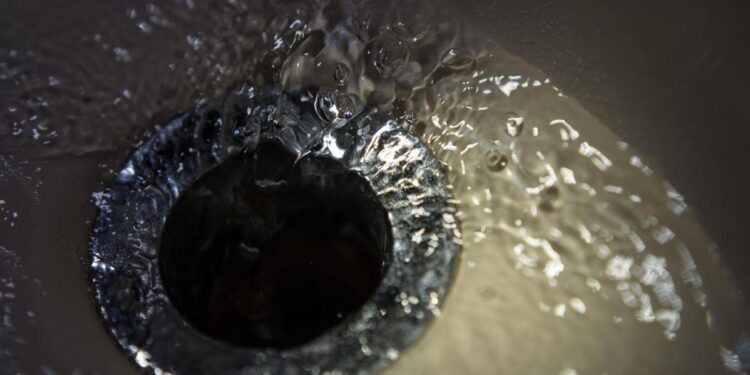For any business, operational continuity is essential. Yet, one of the most overlooked threats to day-to-day operations is a drainage failure. A blocked toilet, an overflowing gully, or a burst underground pipe can bring commercial premises to a standstill – sometimes within minutes. This is especially true in areas frequently affected by blocked drains Portsmouth, where even minor issues can escalate quickly without timely intervention.
Whether it’s a restaurant dealing with unusable washrooms during peak hours or an office forced to close due to foul odours and standing water, even a short-lived drainage issue can disrupt service, damage infrastructure, and impact customer trust. In worst-case scenarios, health and safety violations or water damage can lead to costly downtime, cancelled bookings, or even legal consequences.
The risk is particularly acute in densely populated or coastal areas like Portsmouth, where older drainage systems and high water tables increase vulnerability. In these environments, businesses must be especially proactive in preparing for drain emergencies – because when a failure occurs, the cost of inaction can be far greater than the fix.
That’s why many businesses in the PO1 area rely on DrainBoss, a trusted local drainage company with over 20 years of experience handling commercial emergencies. Their deep understanding of Portsmouth’s drainage infrastructure and their rapid, fixed-fee service make them a go-to partner for businesses that can’t afford to be offline.
Common Commercial Drainage Emergencies (and Why They Happen)
Drainage issues in commercial properties are rarely just bad luck – they’re usually the result of predictable patterns, poor maintenance, or excessive strain on ageing systems.
One of the most frequent culprits is fat, oil, and grease (FOG) build-up, particularly in kitchens, cafés, and food-handling environments. These substances harden inside the pipes over time, forming stubborn blockages that can lead to slow drainage or complete system failure. Despite the presence of grease traps in many premises, they are often undersized, poorly maintained, or simply not enough during busy service.
Another widespread issue stems from inappropriate waste being flushed down toilets. Items like paper towels, wet wipes, sanitary products, and facial tissues might seem harmless, but they don’t break down like toilet paper. When flushed in high volumes – especially in public-use facilities – they can quickly cause serious obstructions.
Beyond day-to-day usage, structural problems within the drainage network are a growing concern. Tree root ingress, collapsed clay pipes, and corrosion in older systems can create recurring blockages and leaks, often without visible warning until the problem becomes severe. These issues are especially common in older commercial buildings where pipework has not been modernised.
Finally, many commercial drainage systems are simply not designed to handle the pressure of seasonal surges. During peak trading periods – such as summer in coastal towns or the run-up to holidays – higher footfall leads to increased usage. Without proactive maintenance, this strain can expose weaknesses in the system and trigger failures at the worst possible time.
Understanding the causes behind these emergencies is the first step towards preventing them. In the next section, we’ll explore the true cost of being unprepared.
The Hidden Costs of Poor Drain Management
When it comes to commercial drainage, out of sight should never mean out of mind. Failing to maintain your drainage system can lead to far more than a blocked pipe – the financial and operational consequences can be significant, even from a single incident.
One of the most immediate risks is the forced closure of your premises. A blocked toilet, overflowing manhole, or flooding in customer areas can render a space unusable until the issue is resolved. For businesses that rely on daily footfall – such as cafés, pubs, gyms, and retail outlets – even a short closure can mean a substantial loss of revenue.
Then there’s the physical damage. Water leaking into floors, walls, or ceilings can lead to warped materials, mould growth, and lasting structural issues. Emergency repairs may involve not only the drainage system itself, but also flooring, electrics, and internal fittings – significantly increasing the total cost.
Uncontrolled leaks and inefficient drainage can also result in higher water bills over time. Whether it’s a hidden pipe leak or constant slow drainage causing taps to run longer, these inefficiencies can quietly eat into profits month after month.
Perhaps most overlooked is the reputational impact. In sectors like hospitality and customer service, hygiene is non-negotiable. Foul odours, overflowing toilets, or repeated plumbing issues can damage public perception and lead to negative reviews. In today’s world of instant online feedback, even one bad experience can cost more than a full year of routine maintenance.
Put simply, the cost of poor drain management often goes far beyond the price of a plumber. Proactive care is not just a maintenance issue – it’s a business investment.
Warning Signs Your Drainage System Is Under Pressure
Drainage emergencies rarely happen without warning – but recognising the early signs can make all the difference between a quick fix and a costly shutdown.
One of the first indicators of trouble is slow-draining sinks, especially in kitchens or washrooms. If water is taking noticeably longer to disappear, it could suggest a developing blockage caused by grease, food debris, or hair accumulating inside the pipework.
Persistent or recurring foul odours are another red flag. Unpleasant smells coming from plugholes, floor drains, or toilet areas often point to waste build-up, stagnant water, or trapped gases – all signs that your drainage system is struggling to function properly.
Water pooling on floors or around the exterior of the building is a more serious symptom. Whether it’s near gullies, doorways, or internal floor drains, standing water can signal a complete obstruction or even a collapsed section of pipe. If ignored, it can pose slip hazards, damage flooring, and invite pest infestations.
Frequent minor plumbing callouts – such as repeated unclogging or complaints of slow drainage – are also worth noting. While they may seem like isolated incidents, a pattern of minor issues is often a warning that the system is deteriorating or not coping with demand.
Common Warning Signs and What They Might Indicate
| Warning Sign | Possible Cause | Recommended Action |
| Slow-draining sinks or showers | Fat, grease, food waste, hair build-up | Internal pipe inspection and cleaning |
| Foul odours from drains | Waste build-up, stagnant water, trapped gases | Jetting or CCTV survey to identify blockage |
| Standing water inside or outside | Full blockage or collapsed drain section | Urgent professional inspection |
| Frequent small plumbing callouts | System under pressure, recurring obstructions | Full drain system assessment |
| Gurgling noises in pipes | Air trapped due to partial blockages | Preventative maintenance and cleaning |
The key is not to treat these signs as routine inconveniences. Instead, they should prompt a closer inspection of your drainage network before the problem escalates. Prevention, as always, is far less disruptive than emergency response.
The Drain Emergency Readiness Checklist
Being prepared for a drainage emergency doesn’t just mean having a phone number ready – it means putting systems in place that reduce the risk of disruption and ensure a fast, organised response if problems arise. Here’s a practical checklist every business should follow to improve resilience.
- Inspect internal and external drainage regularly. Schedule routine visual checks of sinks, floor drains, toilets, gullies, and manholes. Look for signs of slow drainage, leaks, standing water, or debris build-up. Exterior inspections are especially important after heavy rain or leaf fall.
- Train staff on proper waste disposal. Make sure all team members understand what should and shouldn’t go down sinks and toilets. In kitchens, that means scraping food into bins before washing up. In washrooms, it means flushing only toilet paper – nothing else.
- Use clear signage in toilets and kitchens. Install polite but firm signage to remind staff and visitors not to flush items like wipes, paper towels, or sanitary products. In kitchens, visual cues above sinks can help prevent grease or food scraps from going down the plughole.
- Create a drain emergency action plan. Develop a clear step-by-step plan in case of a serious blockage or flood. Who is responsible for shutting off water? Who contacts the drainage specialist? Where are cleaning supplies and flood barriers stored? A well-prepared plan minimises panic and speeds up resolution.
- Keep a maintenance and inspection log. Maintain a simple record of checks, incidents, and maintenance appointments. This helps spot patterns, demonstrates due diligence, and may be useful for insurance claims or compliance checks.
A proactive approach to drain management protects more than just your plumbing – it safeguards your operations, your property, and your reputation. In the next section, we’ll explore why local expertise matters when it comes to getting fast help when you need it most.
Why Local Knowledge Matters in an Emergency
When a drainage emergency strikes, time is of the essence – and working with a local expert can make all the difference between a swift resolution and prolonged disruption.
Local drainage specialists have a deeper understanding of the area’s infrastructure. In towns with a mix of historic buildings and modern developments – such as coastal cities and older urban centres – underground drainage layouts can be complex and inconsistent. Knowledge of common pipe materials, local council drainage schemes, and previous infrastructure upgrades allows local engineers to diagnose and resolve issues faster and more accurately.
Proximity also matters. A nearby team can attend emergencies without delay, reducing the window for water damage, business disruption, and safety risks. Unlike national call centres that dispatch from distant hubs, a local provider is often minutes – not hours – away.
Equally important is experience with different building types. From Victorian pubs with ageing clay pipes to modern business parks with integrated greywater systems, drainage setups vary widely. A professional familiar with the local property stock knows what to expect and comes prepared with the right tools and methods.
Many experienced local firms also operate with an “arrive and resolve” approach – fully equipped vans, CCTV diagnostics, and high-pressure jetting systems allow them to fix the majority of issues on the first visit. This efficiency not only restores service quickly, but also helps minimise lost revenue, staff downtime, and customer inconvenience.
In short, when every minute counts, local knowledge isn’t just convenient – it’s critical.
Prevention Is Profitable: Maintenance and Surveys
Drainage may not be the most glamorous aspect of running a business, but smart, preventative management can lead to significant long-term savings – both in money and operational continuity.
Regular inspections and routine drain cleaning are among the most effective ways to avoid disruption. Scheduled maintenance, such as high-pressure water jetting or electro-mechanical cleaning, helps keep pipework clear of debris, grease, and scale before they develop into serious blockages. This is especially important in high-usage environments like commercial kitchens, hospitality venues, and public buildings.
CCTV drain surveys take prevention to the next level. Using advanced camera systems, engineers can inspect the inside of your drains without any digging. This allows for early detection of cracks, root intrusion, misaligned joints, or partial collapses – issues that often go unnoticed until a full failure occurs. Identifying them early means you can act before the damage becomes costly or disruptive.
Preventative maintenance also helps businesses move from reactive to planned spending. Emergency callouts, last-minute closures, and water damage restoration can be expensive and stressful. In contrast, scheduled servicing is predictable, budget-friendly, and far less likely to interfere with your trading hours.
Many businesses that adopt a proactive approach find that it pays for itself quickly. By reducing the frequency and severity of blockages, avoiding property damage, and keeping facilities safe and hygienic, preventative care becomes not just a cost-saving strategy, but a safeguard for your reputation and productivity.
Put simply: fix before it fails – because planned maintenance is always cheaper than emergency repairs.
Conclusion
Drainage problems are an inevitable part of running any commercial property – but full-blown disasters are not. With the right awareness, planning, and response strategy, most issues can be prevented or resolved before they impact your business operations.
Now is the perfect time to review how prepared your business really is. Do you have a plan in place? Are your staff aware of best practices? Is your drainage system regularly inspected? Investing in prevention and working with professionals who understand your local area can dramatically reduce both risk and cost.
For businesses operating in and around Portsmouth, DrainBoss offers a valuable combination of local expertise, rapid response times, and fully transparent fixed-fee services. With over two decades of experience and a strong reputation across the South East, they help ensure that when emergencies do occur, your business stays in control – not underwater.
Whether you’re facing blocked drains in Reigate, Portsmouth, or elsewhere in Hampshire, Surrey, or beyond, DrainBoss delivers the same high standard of service – fast, efficient, and built on genuine local knowledge. Being prepared means having the right people on your side before a crisis ever begins.













